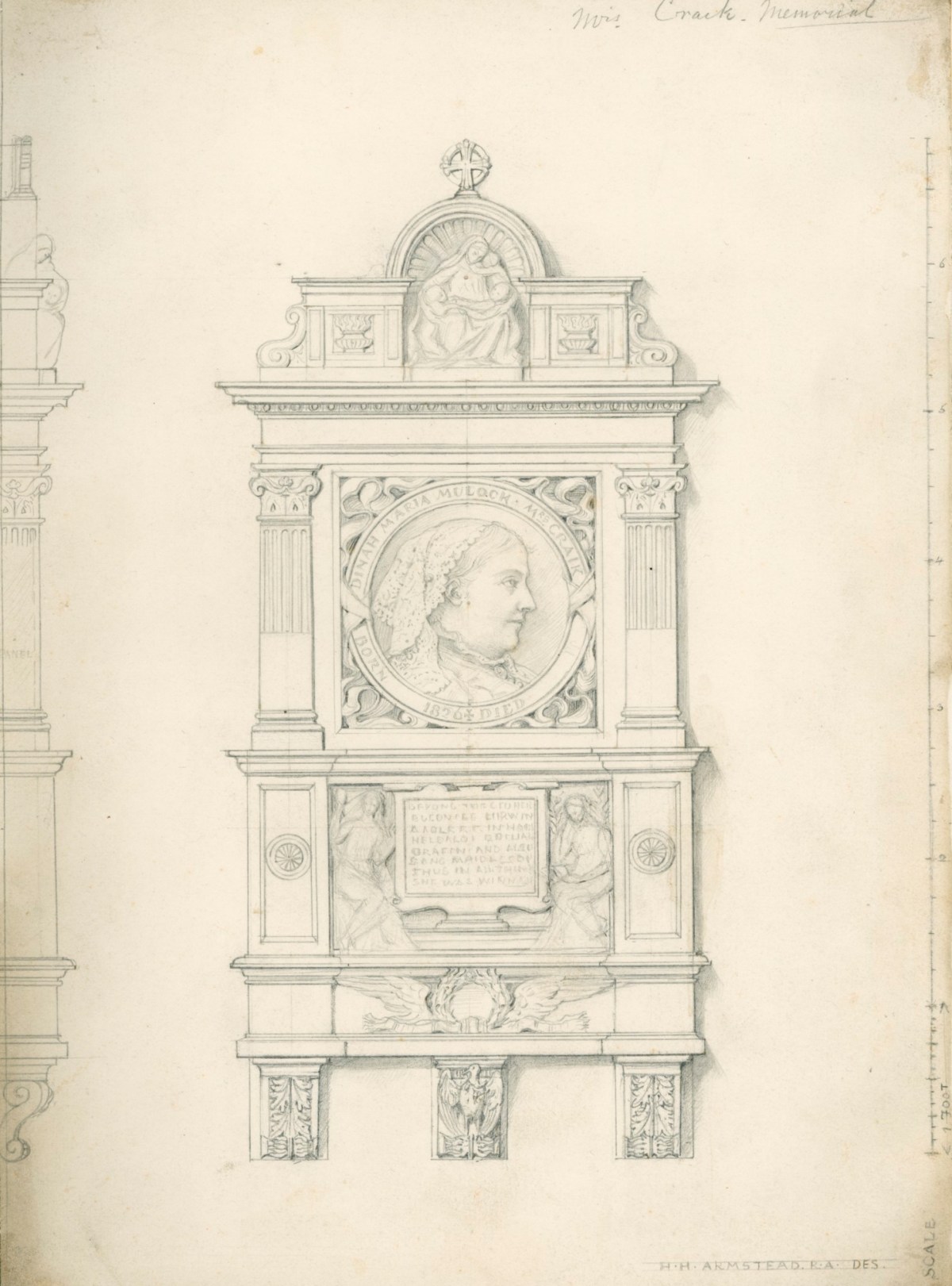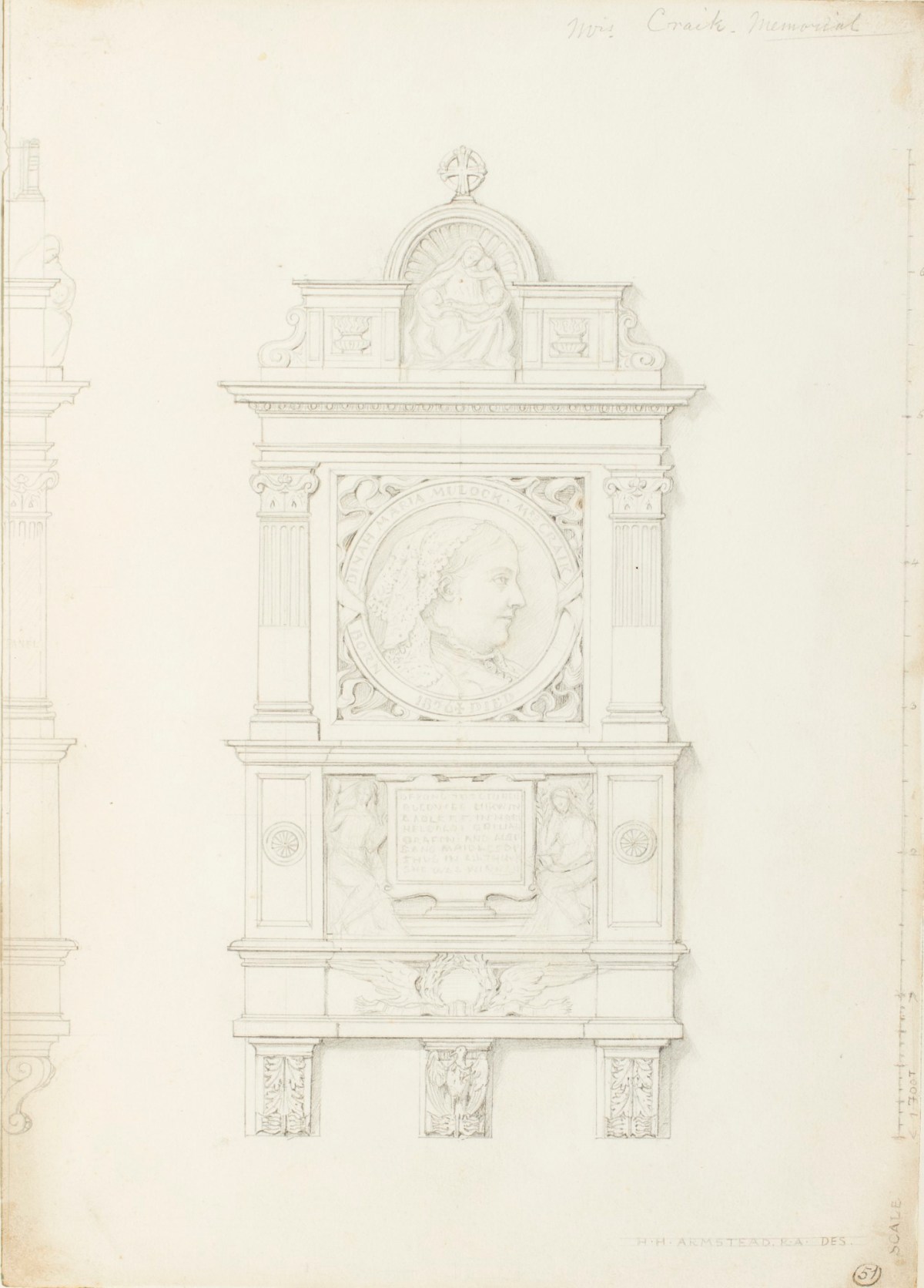
Henry Hugh Armstead RA, Design for a memorial to Mrs. Craik, Tewkesbury, c. 1889.
Pencil on cream wove paper. 350 mm x 248 mm. © Photo: Royal Academy of Arts, London.
This image is not available to download. To licence this image for commercial purposes, contact our Picture Library at picturelibrary@royalacademy.org.uk

Henry Hugh Armstead RA, Design for a memorial to Mrs. Craik, Tewkesbury, c. 1889.
Pencil on cream wove paper. 350 mm x 248 mm. © Photo: Royal Academy of Arts, London.
This image is not available to download. To licence this image for commercial purposes, contact our Picture Library at picturelibrary@royalacademy.org.uk
Design for a memorial to Mrs. Craik, Tewkesbury, c. 1889
Henry Hugh Armstead RA (1828 - 1905)
RA Collection: Art
A design for the memorial to Mrs Craik (1826-1887), also known as Dinah Maria Mulock, in Tewkesbury Abbey. This drawing is very similar to the finished sculpture which is still in situ. On the left of the sheet is a view of the memorial in section.
Mrs Craik, a novelist and poet, was best known for her novel John Halifax, Gentleman (1856). She was buried in London but the Times (21st July 1890) reported that shortly afterwards a committee was formed to determine the location and form of a memorial to Mrs Craik and her work. They decided that the 'memorial should take the form of a marble medallion' and that it should be in Tewkesbury where John Halifax is set.
Armstead followed the committee's brief by centering the design around a relief roundel with a profile portrait of Mrs. Craik. However, the memorial he designed is much more ambitious than a simple 'marble medallion'. The relief portrait of Mrs Craik is surrounded by a square frame and flanked by pilasters with horizontal egg and dart carving above. This supports a niche with the figure of a seated Virgin and Child surmounted by a cross. Below the roundel is a rectangular panel with an inscribed quotation from Mrs Craik's novel flanked by figures identified as 'Truth and Purity'. Below this is a smaller panel with a wreath held by two birds.
In 1889 Armstead exhibited the sculpted memorial (entitled 'Mrs Craik; for Tewkesbury') at the Royal Academy. His design for this and other memorial monuments owes much to Italian relief sculpture of the mid-15th to early 16th century, in particular marble tabernacles of the period and, to a lesser extent, the decorative forms found on tomb sculpture. Armstead would have been able to study such monuments on his visit to Italy in the early 1860s and also in London collections such as that of the South Kensington Museum (V&A).
Related works:
There is a sketch model for Mrs. Craik's monument in the Fitzwilliam Museum, Inv. No. M. 17-1892
Object details
350 mm x 248 mm
Start exploring the RA Collection
- Explore art works, paint-smeared palettes, scribbled letters and more...
- Artists and architects have run the RA for 250 years.
Our Collection is a record of them.



